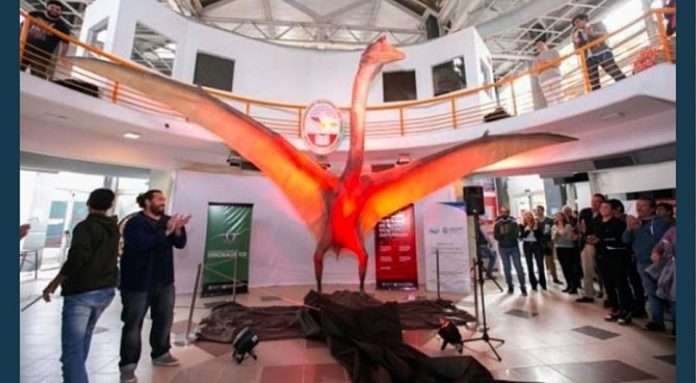
May 25 (UPI) — Scientists have uncovered the remains of one of the largest pterosaurs on record, researchers announced in a study published Tuesday in the scientific journal Cretaceous Research.
The fossils are from the largest-ever pterosaur found in South America, and one of the largest flying vertebrates in the world, according to researchers.
The discovery of two separate animals was made in an outcrop in Argentina’s Mendoza province and published in April.
The Thanatosdrakon amaru is a new azhdarchid, a member of the pterosaur family of large, flying predators, predominantly from the Late Cretaceous Period.
The name is a combination of Thanatos, the Greek word for death, and drakon, meaning dragon, leading scientists to call it the Dragon of Death.
Researchers confirmed they lived between 146 million and 66 million years ago, or approximately 20 million years before a catastrophic asteroid collided with Earth.
Wingspans of the two animals measured approximately 23 feet wide and 30 feet wide, around the length of a school bus. With no predatory rivals, pterosaurs are believed to have flown on all continents, in various different shapes.
“The remains of Thanatosdrakon present different particularities that allow us to differentiate them from other known pterosaurs,” study lead author Leonardo Ortiz of Argentina’s Laboratory and Museum of Dinosaurs told USA Today.
“Fundamentally, these characteristics are found in the vertebrae and limbs. This allowed us to establish a new species of pterosaur.”



